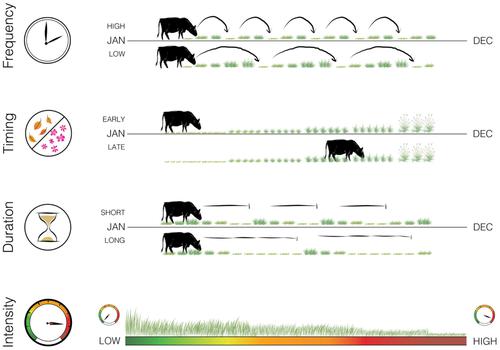当前位置:
X-MOL 学术
›
Glob. Change Biol.
›
论文详情
Our official English website, www.x-mol.net, welcomes your feedback! (Note: you will need to create a separate account there.)
Ruminating on soil carbon: Applying current understanding to inform grazing management
Global Change Biology ( IF 11.6 ) Pub Date : 2024-03-08 , DOI: 10.1111/gcb.17223 Paige L. Stanley 1 , Chris Wilson 2 , Erica Patterson 3 , Megan Machmuller 1 , M. Francesca Cotrufo 1
Global Change Biology ( IF 11.6 ) Pub Date : 2024-03-08 , DOI: 10.1111/gcb.17223 Paige L. Stanley 1 , Chris Wilson 2 , Erica Patterson 3 , Megan Machmuller 1 , M. Francesca Cotrufo 1
Affiliation

|
Among options for atmospheric CO2 removal, sequestering soil organic carbon (SOC) via improved grazing management is a rare opportunity because it is scalable across millions of globally grazed acres, low cost, and has high technical potential. Decades of scientific research on grazing and SOC has failed to form a cohesive understanding of how grazing management affects SOC stocks and their distribution between particulate (POM) and mineral‐associated organic matter (MAOM)—characterized by different formation and stabilization pathways—across different climatic contexts. As we increasingly look to grazing management for SOC sequestration on grazinglands to bolster our climate change mitigation efforts, we need a clear and collective understanding of grazing management's impact on pathways of SOC change to inform on‐the‐ground management decisions. We set out to review the effects of grazing management on SOC through a unified plant ecophysiology and soil biogeochemistry conceptual framework, where elements such as productivity, input quality, soil mineral capacity, and climate variables such as aridity co‐govern SOC accumulation and distribution into POM and MAOM. To maximize applicability to grazingland managers, we discuss how common management levers that drive overall grazing pattern, including timing, intensity, duration, and frequency can be used to optimize mechanistic pathways of SOC sequestration. We discuss important research needs and measurement challenges, and highlight how our conceptual framework can inform more robust research with greater applicability for maximizing the use of grazing management to sequester SOC.
中文翻译:

反思土壤碳:应用当前的理解为放牧管理提供信息
大气 CO 的选择之一2 通过改进放牧管理来去除、封存土壤有机碳(SOC)是一个难得的机会,因为它可以在全球数百万英亩的放牧面积上扩展,成本低,并且具有很高的技术潜力。数十年关于放牧和 SOC 的科学研究未能对放牧管理如何影响 SOC 储量及其在颗粒物 (POM) 和矿物相关有机物 (MAOM) 之间的分布形成一致的理解,其特点是不同的形成和稳定途径。气候背景。随着我们越来越多地寻求通过放牧管理来固定牧场上的 SOC,以支持我们减缓气候变化的努力,我们需要对放牧管理对 SOC 变化路径的影响有一个清晰和集体的了解,以便为实地管理决策提供信息。我们着手通过统一的植物生态生理学和土壤生物地球化学概念框架来回顾放牧管理对 SOC 的影响,其中生产力、投入质量、土壤矿物质容量和干旱等气候变量共同控制 SOC 的积累和分配。 POM 和 MAOM。为了最大限度地提高对牧场管理者的适用性,我们讨论了如何使用驱动整体放牧模式的常见管理杠杆(包括时间、强度、持续时间和频率)来优化 SOC 封存的机械途径。我们讨论了重要的研究需求和测量挑战,并强调我们的概念框架如何为更稳健的研究提供信息,并具有更大的适用性,以最大限度地利用放牧管理来隔离有机碳。
更新日期:2024-03-08
中文翻译:

反思土壤碳:应用当前的理解为放牧管理提供信息
大气 CO 的选择之一



























 京公网安备 11010802027423号
京公网安备 11010802027423号